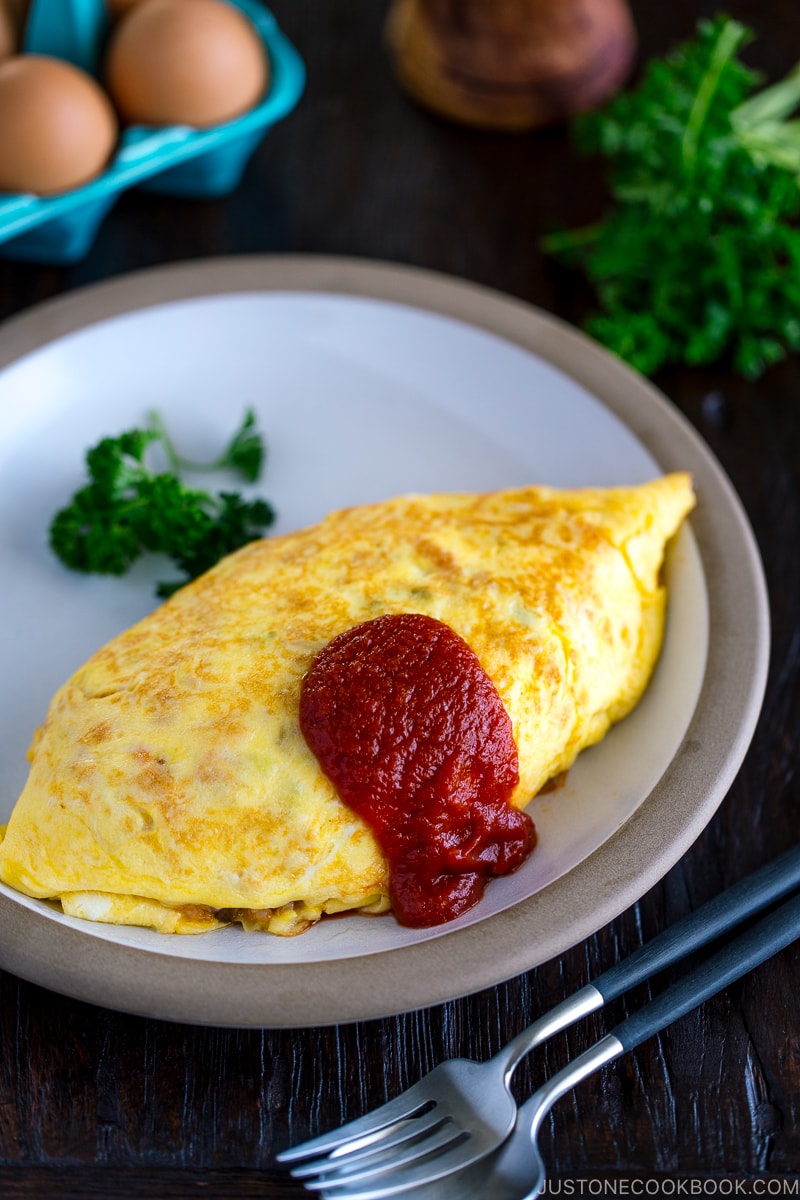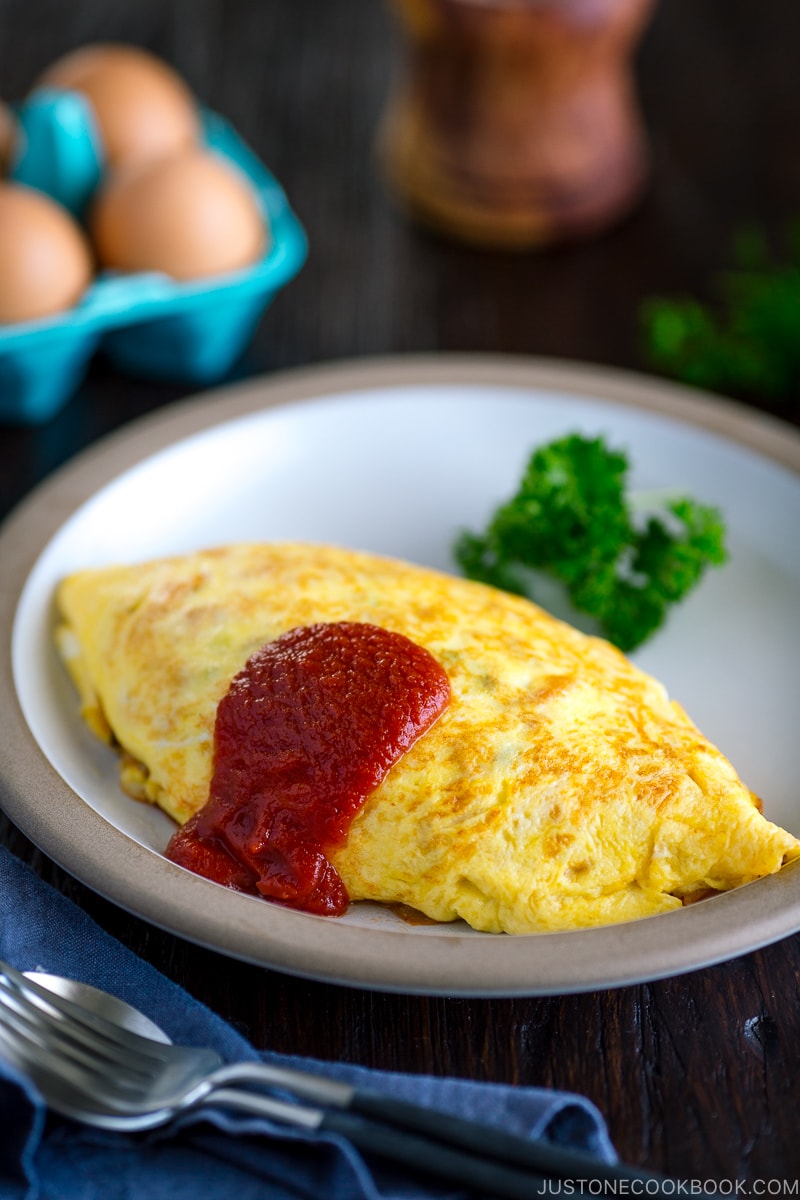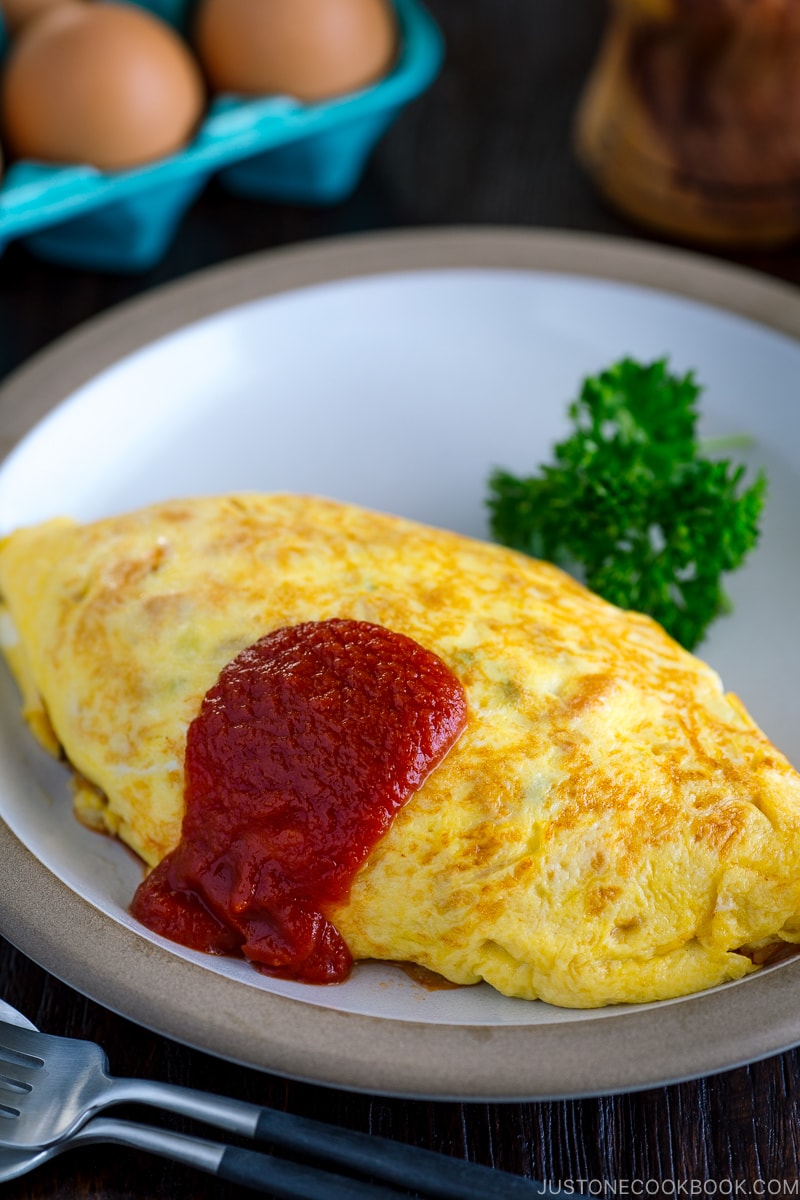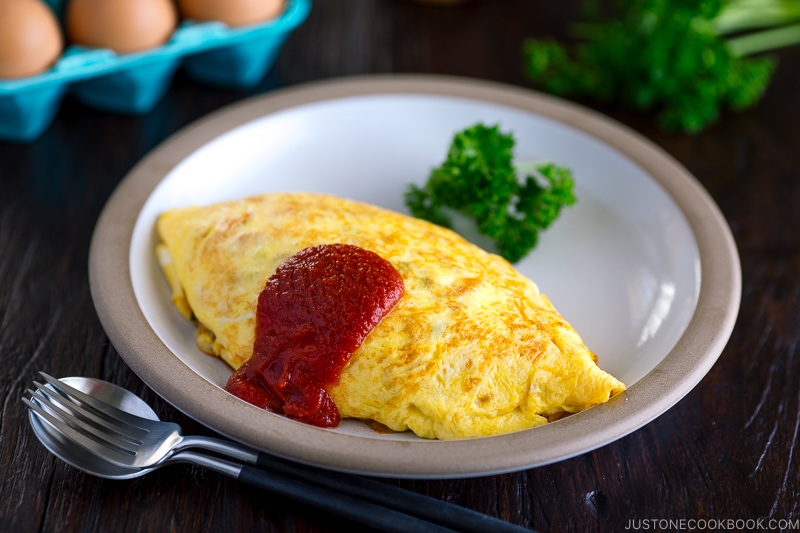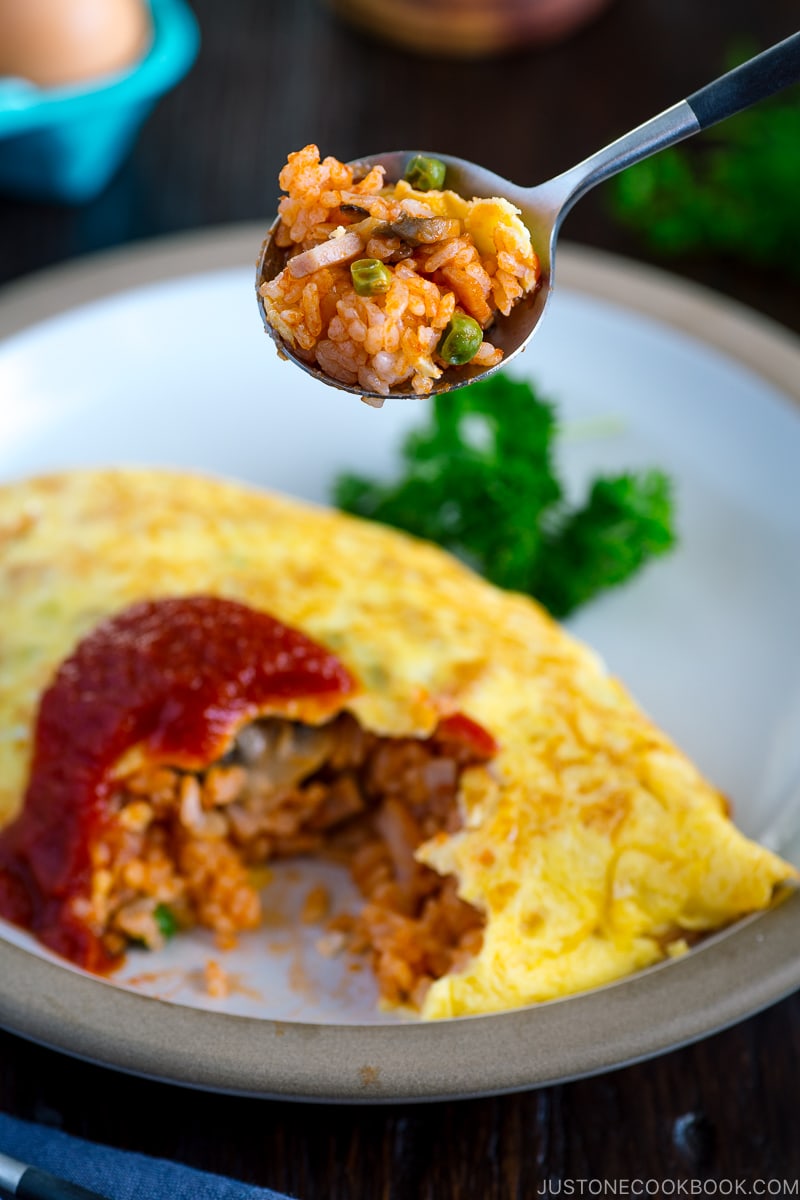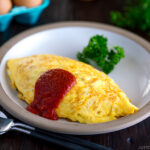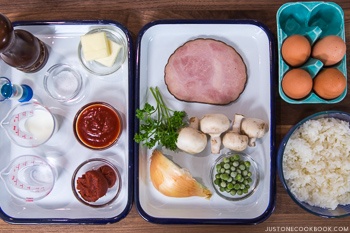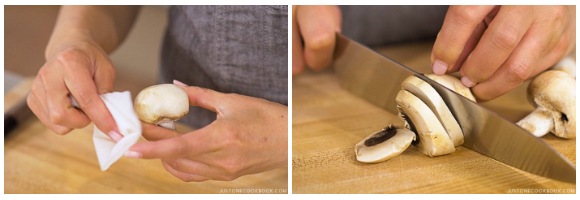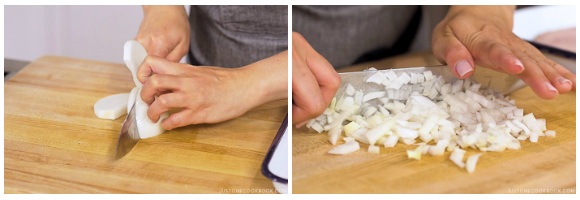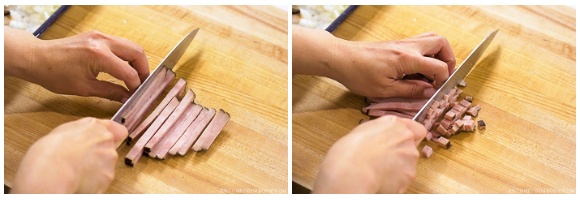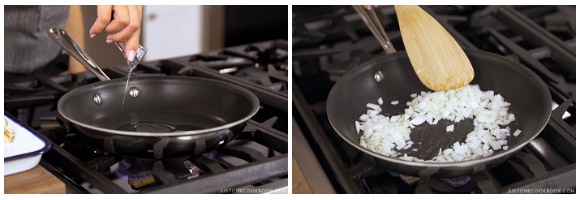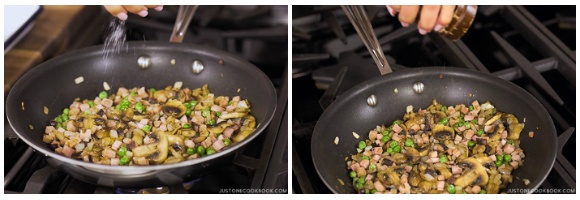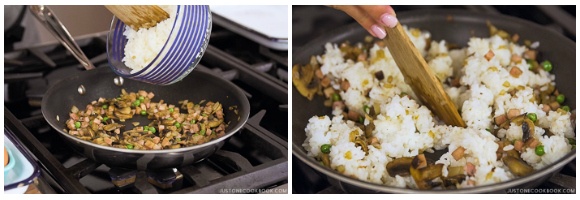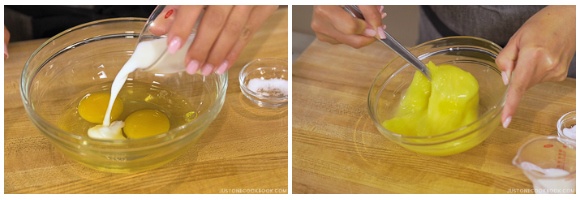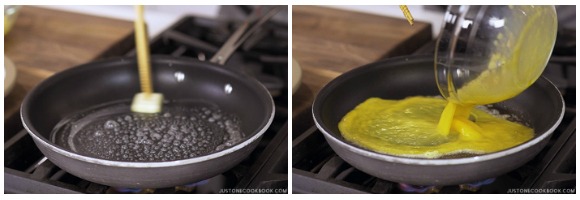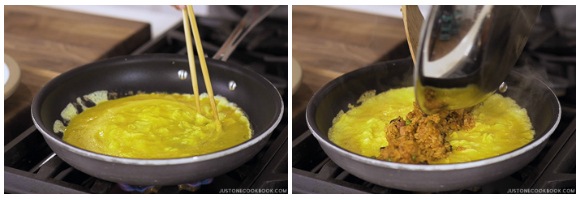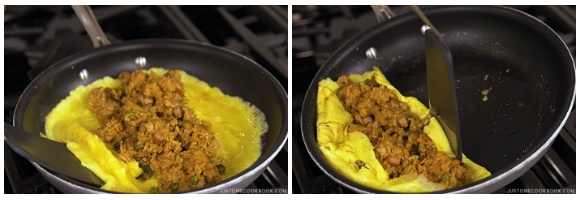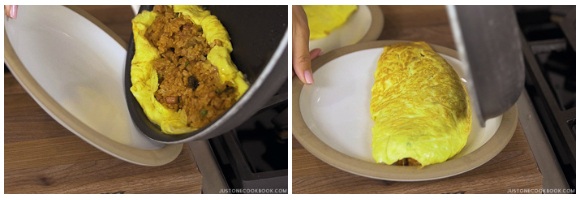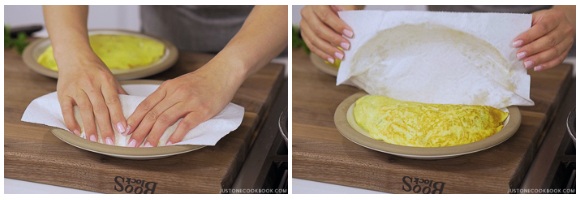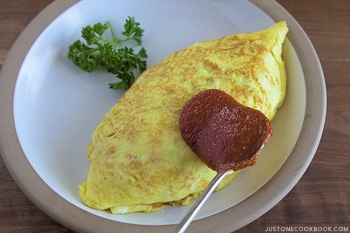Fried rice flavored with the beloved American condiment ketchup and encased in a golden omelette pillow, Omurice (オムライス) or Omelette Rice may not be your typical choice when you visit your local Japanese restaurants. It’s easy to mistake the dish as a fairly recent fusion invention of modern Japanese cuisine. However, this humble dish has been a popular yoshoku (western-style Japanese food) for over a century. That’s right! It is a Japanese rendition of ‘mash-up’ comfort food at its best. It’s got grain, vegetables, proteins, and a big bright sunny disposition, enough to make a fried rice fiend wake up hungry. This delicious Omurice was featured on the popular Japanese TV drama called “Shinya Shokudo (深夜食堂)” or “Midnight Diner: Tokyo Stories” which is available on Netflix.
Omurice and Yoshoku
Omurice (オムライス) is a loanword from both Omelette (Omuretsu, オムレツ) and Rice (raisu, ライス). In this recipe, fried rice is seasoned with the sweet and sour flavor of ketchup and tomato puree, and tucked inside a thin blanket of a golden fluffy omelette. It’s sweet and savory, the whole ensemble of Omurice is just so comforting to many Japanese people that it is considered one of the most popular yoshoku (western-style Japanese food). Yoshoku started to appear around the Meiji Era (1868–1912) after Japan ended its isolationist foreign policy and opened the ports to the West. Tonkatsu, Korokke, Hambagu, Curry Rice, Doria (rice gratin), Cabbage Roll, Spaghetti Napolitan, and Omurice are just some of the familiar dishes in the category. They have katakana names to emphasize their foreignness, using the word “raisu” (ライス, rice) instead of “gohan” (ご飯, rice) for example. Another easy way to tell these dishes apart? They are often served with fork, knife, and spoons, instead of chopsticks. At the time, foreign ingredients were difficult to find in Japan so people made yoshoku using local ingredients. Even though the dishes may look like Western dishes, the taste is still distinctly Japanese. I think that has unintentionally made yoshoku dishes uniquely Japanese. You may have noticed the abundant use of ketchup in Western-style Japanese dishes. Brought in by the American army who came to Japan after World War II, ketchup was used in dishes to replace tomato sauce which was not easily accessible then. Since it is convenient and tasty, ketchup continues to become the mainstay in the Japanese kitchen pantry.
Who Invented Omurice?
There are 2 strong theories on Omurice’s origin. Theory 1: When the owner at a yoshoku restaurant Hokkyokusei (北極星) in Osaka learned about a regular customer who wasn’t feeling well, he quickly cooked up simple fried rice with mushrooms and onion seasoned with ketchup, and carefully wrapped with omelette to serve the customer so he would regain his stamina. The customer loved it so much that he asked for the menu name. The sharp-witted owner came up with the name “Omurice”. This Omurice is much closer to what Omurice is now. Theory 2: Simple fried rice with egg, onion, and minced meat was served as a meal for workers at Renga-tei (煉瓦亭) in Tokyo. Other customers were drawn by the vibrant egg fried rice that they started requesting it, and that’s how Omurice became an official restaurant menu. Whichever story you prefer, I think it all started with Omurice’s ability to hit the right spot, especially when you crave comfort food.
Omurice (Omelette Rice) – 2 Ways
In general, there are two ways to make Omurice. The original one called Ganso Omurice (元祖オムライス) is to wrap the fried rice with a thin omelette, like the one I shared today. Some people prefer light yellow omelette (no burn spot), but I personally prefer my Omurice to have a slightly golden color (which adds flavor) and the omelette is still creamy and soft on the inside. The second style of Omurice is called Fuwatoro Omurice (ふわとろオムライス). First, you make ketchup fried rice and transfer it to the plate. Then you make the omelette, and while it’s fluffy (fuwa) and runny (toro), place it on top of the ketchup fried rice. Before serving, you slice the center of omelette and runny egg yolk to cover the fried rice. You might have seen this style of Omurice in the movie Tanpopo. Hence, it’s also called Tanpopo Omurice (タンポポオムライス). Which one is your favorite style?
Variations of Omurice (Omelette Rice)
Here is the list of Omurice variations that I have seen or thought of. As you can see, the possibility is endless. Feel free to take the liberty to use whatever ingredients you have in the fridge and make your own version. Creativity is welcome when comes to making Omurice!
Fried Rice Ingredients
Ham Chicken Seafood Onion Carrot Green peas Mushrooms
Fried Rice Flavor
Ketchup Tomato sauce Butter Garlic Salt & Pepper
Sauce over Omurice
Tomato Ketchup Tomato Sauce (sometimes with extra tomatoes, mushrooms, seafood or more ingredients) White Sauce / Bechamel Sauce (sometimes with seafood) Japanese Curry Sauce Hayashi Sauce Demi-glace sauce Ankake (starchy thick sauce)
Filling or Additions on top of Omurice
Cheese Hambagu Fried Fish Korokke Herbs
The cooking method for Omurice is really quite simple. It’s a perfect quick one-dish meal for busy moms, college students, and singles as you can whip it up in a short time. Trust me, nothing beats good fried rice with a fluffy egg. I hope you enjoy making Omurice at home! Wish to learn more about Japanese cooking? Sign up for our free newsletter to receive cooking tips & recipe updates! And stay in touch with me on Facebook, Pinterest, YouTube, and Instagram.
